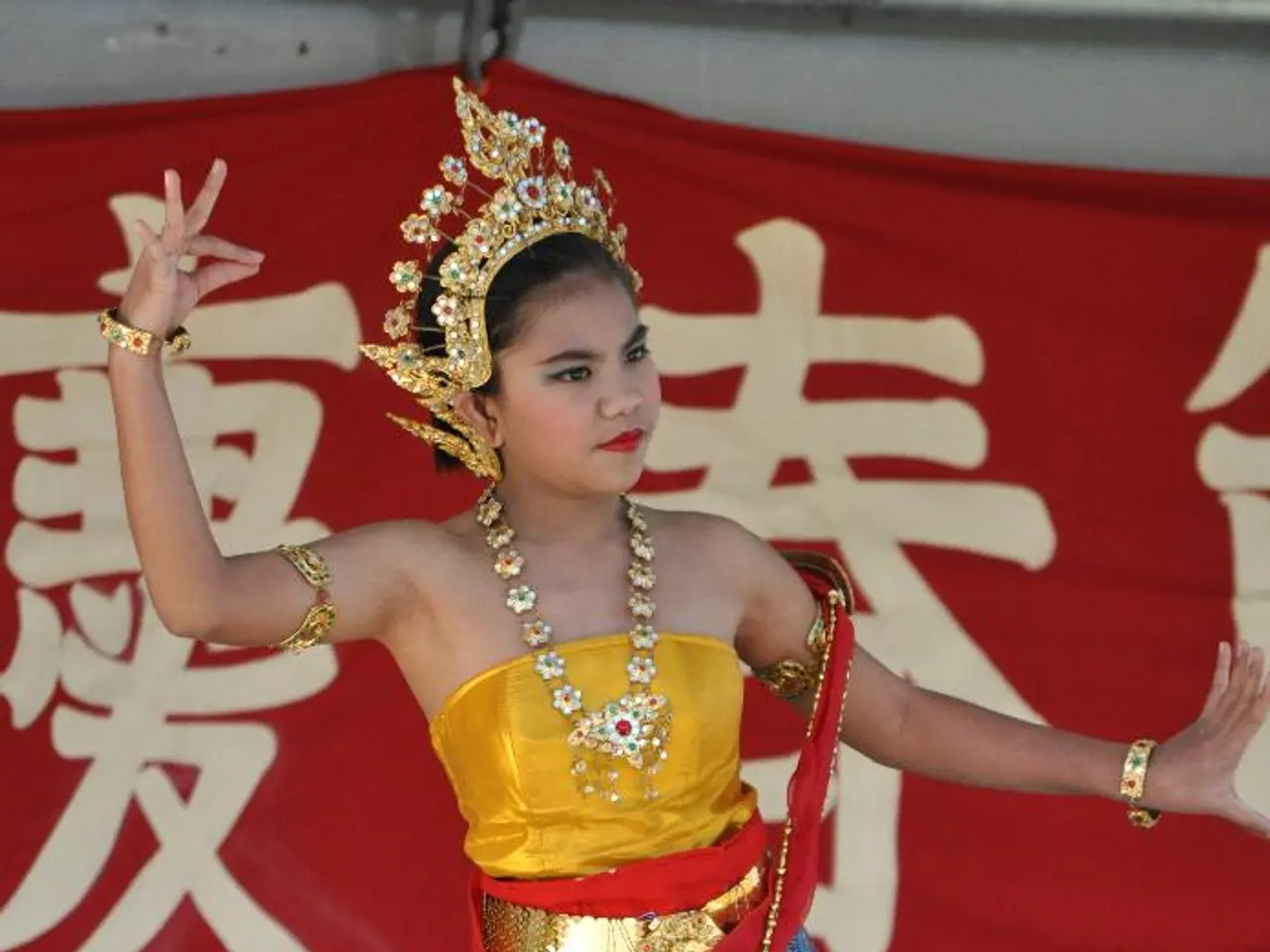Expression through Musical Arts
In the ever-evolving world of music, the fusion of different cultural styles has led to the birth of new genres and forms of expression, such as jazz and hip-hop. This blending of musical traditions not only enriches our global soundscape but also serves as a powerful medium for expressing cultural identity, preserving traditions, and advocating for social change.
Music, as a cultural expression, is a mirror that reflects the values, beliefs, and identity of a particular culture or society. In African and Indian cultures, music plays a crucial role in maintaining cultural practices, storytelling, and preserving traditions.
In African cultures, music is an essential medium for preserving and expressing cultural identity and collective memory. South African traditional music, like Xhosa-traditional music by groups like Amampondo and artists like Dizu Plaatjies, showcases Xhosa cultural identity globally by combining traditional rhythms and cultural values with contemporary performances and dance. Another example is Congolese rumba, which represents the blend of ethnic diversity and modern influences by mixing traditional instruments with electric guitars and synthesizers.
Indian music also reflects cultural identity in unique ways. The Dalit Rights Movement features the cultural troupe Kabir Kala Manch from Maharashtra, which uses music inspired by Bhakti poets like Kabir and Ambedkarite ideology to challenge caste oppression and give voice to marginalized Dalit communities. During the Farmers’ Protest (2020–2021), Punjabi, Haryanvi, and Hindi protest songs performed by artists like Kanwar Grewal and Ranjit Bawa became a powerful means of expressing farmers’ struggles, hopes, and unity, turning protest sites into musical stages that reinforced cultural identity and solidarity among diverse regional groups.
Music has played a pivotal role in fostering cultural exchange and understanding between different societies, enriching musical traditions through the incorporation of diverse influences from different cultures. These new musical forms serve as expressions of resilience and creativity within marginalized communities.
Moreover, music has the power to transcend language barriers and create connections based on shared emotional experiences. In both African and Indian contexts, music has been used to express social issues and foster community cohesion.
Lastly, music plays a significant role in cultural rituals and ceremonies by providing a soundtrack for important events and helping to create a sense of community and shared experience among participants. In this way, music continues to be a vital reflection of cultural identity, preserving traditions, and fostering understanding across the globe.
References: 1. Amampondo 2. Kabir Kala Manch 3. Congolese rumba recognized by UNESCO 4. Makossa, Bikutsi, and Assiko in African music 5. Farmers’ Protest (2020–2021) and music
Visual art, fashion-and-beauty, and entertainment are additional expressions of cultural identity that echo the values and beliefs of various societies. Africa's rich tapestry of traditional arts showcases cultural heritage through bold patterns and symbolism, as seen in the distinctive Adinkra symbols of the Ashanti people in Ghana and the majestic Maasai beadwork from Tanzania. These artistic practices serve not only as aesthetic expressions but also as methods for preserving history and cultural traditions.
In India, the kathak dance form, originating from North India, showcases the cultural narrative of the nomadic Bhakti poets and their spiritual journey, while Bharatanatyam, a classical dance from South India, reflects the philosophical teachings of Hinduism. These dance forms, like Indian music, are deeply rooted in preserving cultural traditions and sharing collective stories.
The vibrant fusion of visual arts, music, and dance uniquely express different cultural identities while bridging social and cultural gaps. India's Minakshi temple murals, the Dogon Bas-Reliefs from Mali, and the intricate metalwork from the Yoruba tribe in Nigeria all demonstrate the exquisite skill and multifaceted nature of traditional artistic practices.
Ultimately, cultural traditions, visual art, lifestyle, fashion-and-beauty, entertainment, and music all contribute to the rich global mosaic, fostering mutual understanding, empathy, and appreciation of our shared human experience. These artistic expressions not only preserve and celebrate cultural heritage but also serve as powerful agents for change and social cohesion.







